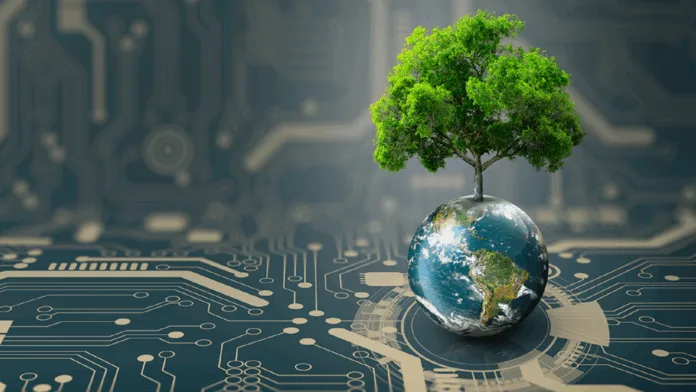
In a world grappling with rising temperatures, extreme weather events, and dwindling natural resources, green technology innovations are emerging as critical tools in the fight against climate change. As we push toward a more sustainable future, technology is stepping up—not just to reduce environmental impact, but to actively reverse it. From clean energy production to AI-driven waste management, innovation is shaping a greener tomorrow.
Let’s explore how tech is reshaping environmental responsibility in ways both groundbreaking and practical.
🌱 The Role of Green Technology in the Climate Fight
The term green technology innovations refers to the development and application of technologies that aim to mitigate or reverse the effects of human activity on the environment. These innovations focus on improving energy efficiency, reducing carbon footprints, managing resources sustainably, and fostering a circular economy.
With global climate goals becoming more urgent, green technology is no longer a niche sector—it’s becoming a core pillar of global infrastructure, policy, and investment strategies.
⚡ Clean Energy Solutions Lead the Charge
One of the most visible and impactful areas of green tech is clean energy. Innovations in renewable energy tech—such as solar, wind, hydro, and geothermal—are rapidly replacing fossil fuels.
Solar panels are becoming more efficient and affordable thanks to advancements in materials like perovskite. At the same time, wind turbines are now capable of producing more energy than ever, even in less-than-ideal conditions. Offshore wind farms, in particular, are expanding across the globe.
Energy storage is also improving. Breakthroughs in battery technology—including lithium-iron phosphate and solid-state batteries—are enabling more consistent energy supplies, overcoming one of the key limitations of renewables.
🔋 Sustainable Tech in Everyday Life
Beyond large-scale infrastructure, sustainable technology is becoming a regular part of everyday consumer life. Smart thermostats, energy-efficient appliances, and electric vehicles (EVs) are helping individuals reduce their carbon footprints.
Electric vehicles, powered by clean electricity and supported by growing charging infrastructure, are set to replace internal combustion engines entirely within the next decade. Meanwhile, smart grids and AI-powered energy systems are optimizing electricity usage in homes, offices, and entire cities.
Even clothing brands are now adopting eco-friendly innovations—using recycled fabrics, biodegradable packaging, and transparent supply chains powered by blockchain technology.
🧠 AI and Data: Making Climate Action Smarter
Artificial intelligence is increasingly being used to drive climate change technology. AI models help predict weather patterns, monitor deforestation, and optimize the operation of wind and solar farms.
Startups and researchers are using machine learning to:
Predict and manage wildfire risks
Detect methane leaks from satellites
Monitor ocean health
Improve agricultural yields with less water and fertilizer
AI’s ability to process massive datasets means governments and businesses can make better decisions, faster—and with a lower environmental cost.
🏗️ Green Construction and Smart Cities
Buildings are responsible for nearly 40% of global carbon emissions. That’s why green construction is an area ripe for innovation.
Modern smart cities are being designed with sustainability at their core. Features like green rooftops, solar facades, and energy-efficient materials are becoming standard. Sensors embedded in buildings monitor energy usage in real time, allowing adjustments that save both power and money.
Vertical farming, water recycling systems, and urban forests are also key components in creating urban environments that support biodiversity and reduce carbon output.
♻️ Waste Reduction and Circular Economy
Waste management is evolving thanks to green technology innovations focused on recycling, composting, and reusing materials. Robotics and computer vision are now used to automate waste sorting, increasing accuracy and efficiency.
Biotechnology is creating biodegradable alternatives to plastics, while blockchain is being used to track the lifecycle of products and encourage manufacturers to adopt more eco-friendly innovations.
Companies are also moving toward a circular economy, designing products with reuse in mind from the start—minimizing landfill waste and environmental damage.
🌍 Challenges and the Path Forward
Despite significant progress, challenges remain. Many green technologies still face high costs, regulatory hurdles, and scalability issues. However, increasing global investment, public support, and government incentives are accelerating their adoption.
Continued innovation is key. Collaboration between governments, tech companies, startups, and the public will determine how effectively we can scale these solutions.
The next decade will likely see exponential growth in climate-conscious technologies—making green technology innovations a central force in how humanity addresses one of its greatest threats.
🚀 Conclusion
Green technology is no longer the future—it’s the present. From clean energy to AI and smart cities, innovation is enabling us to not only minimize environmental damage but actively reverse it. As green technology innovations continue to evolve, they offer a blueprint for a more sustainable, resilient, and intelligent planet.
Whether you’re a policy-maker, tech entrepreneur, or everyday citizen, the tools to fight climate change are increasingly within reach—and technology is leading the way.